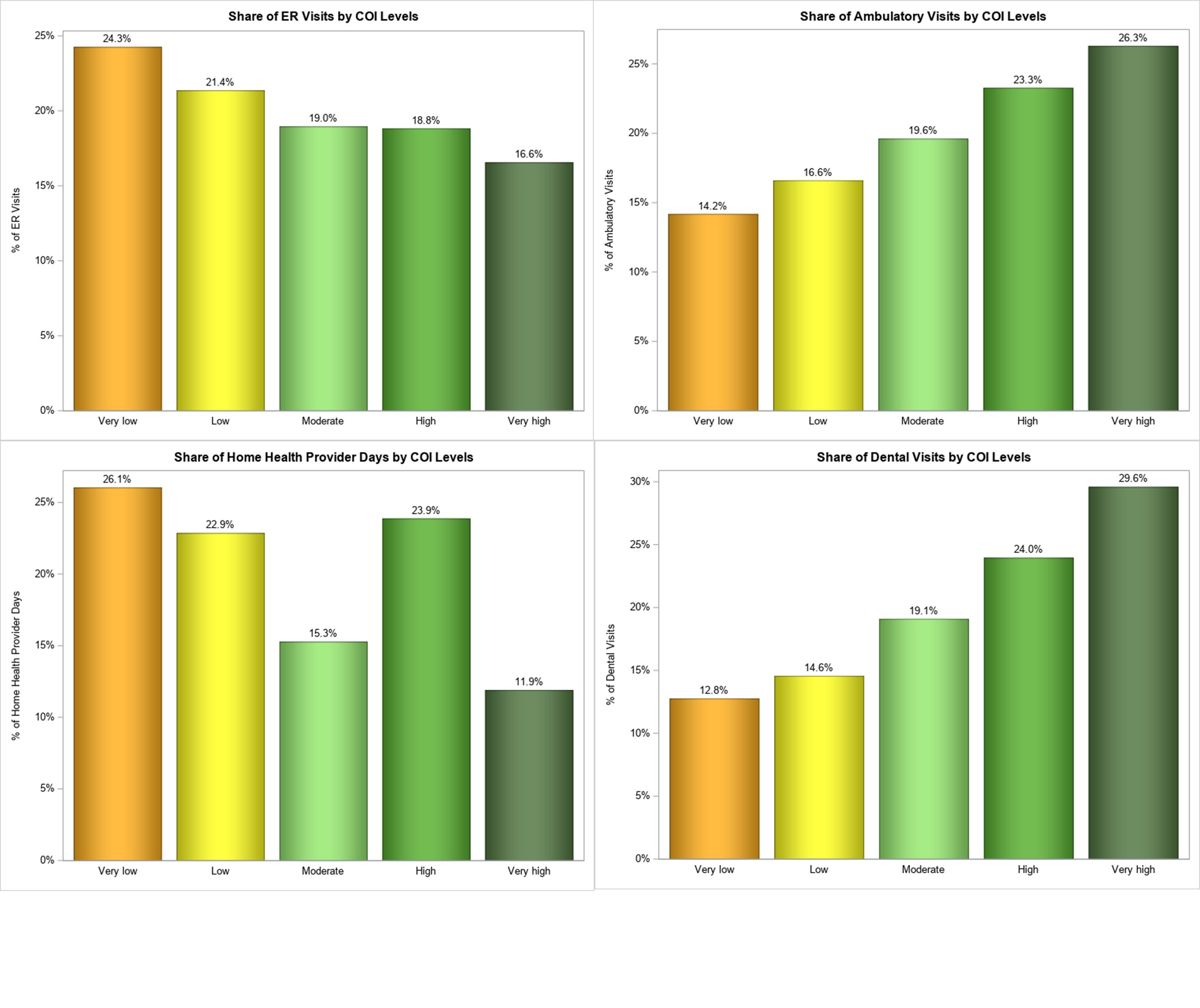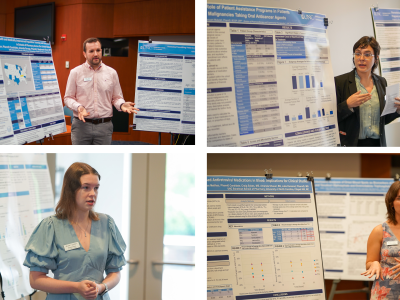October 9, 2023

A new descriptive analysis from the Division of Pharmaceutical Outcomes and Policy (DPOP) at the UNC Eshelman School of Pharmacy found that children living in lower opportunity neighborhoods, areas that lack the vital conditions necessary for health, wealth and well-being, had the highest rates of poor physical and mental health status and fewest ambulatory care visits but accounted for the highest share of emergency department visits.
This is the first analysis of its kind to look at all children across the U.S. and included a variety of variables such as health status, healthcare utilization and expenditures, access to care, parents’ satisfaction with care, and more.
“We’ve been very concerned about families raising children with intellectual and developmental disabilities coming to UNC Health in crisis, often from under-resourced areas lacking an array of nonmedical support as well as easy access to medical services,” said Kathleen Thomas, Ph.D., vice chair of research and graduate studies at the UNC Eshelman School of Pharmacy, associate professor in DPOP and senior author of the paper. “This paper reflects our work to provide a national baseline to understand the associations between child opportunity, access to care and health.”
The motivation behind this study started when physicians noticed that children with complex chronic conditions and mental health issues from low-income areas were seeking health care at a moment of crisis versus having access to preventative care.
“The conversation about how where you live affects your health has been going on for years, but there hasn’t been a study done on nationally representative data that covers all kids and examines the relationship between neighborhood environment and such a broad range of health-related outcomes,” said Izabela Annis, senior data analyst in DPOP and lead author of the paper.
After completing the analysis, Annis shared that the average reports of easy access, good communication and satisfaction with health care from a parent’s perspective were high overall. Those in lower opportunity neighborhoods did have slightly lower reports than children living in high opportunity areas, but the differences were not substantial, which was surprising.
The team’s hope is that this paper raises questions, generates new research ideas and will be used as background for future papers.
This analysis was completed in partnership with Dr. Neal deJong, associate professor in general pediatrics and adolescent medicine at the UNC School of Medicine, Dr. Robert Christian, assistant professor of psychiatry and pediatrics at the UNC School of Medicine, Scott Davis, Ph.D., assistant professor in DPOP and Phillip Hughes, graduate research assistant in DPOP.
Latest News

Dean Angela Kashuba receives Carolina Alumni Faculty Service Award

RASP poster presentations capture student research


